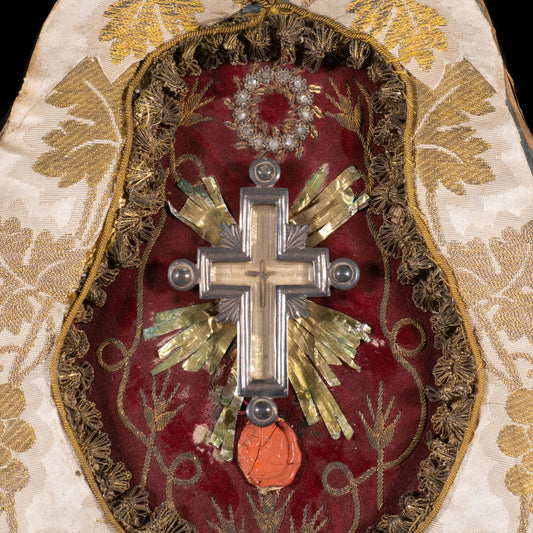The Relics of the True Cross have played a central role in the history of Christianity, symbolizing the crucifixion of Jesus Christ. These revered fragments have sparked intense devotion and been at the heart of compelling stories throughout the centuries.
The relics of the True Cross , considered sacred in Christian tradition, are fragments of the cross on which Jesus is said to have been crucified. These relics are distributed in several holy places around the world.
According to tradition, the discovery was made by Helen, mother of Emperor Constantine, during a pilgrimage to Jerusalem in the 4th century. Since then, fragments have been preserved and venerated in different churches and monasteries.
The fragments, carrying deep sacred meaning, spread across the Christian world, becoming relics of inestimable value. These pieces, invested with an aura of holiness, found their place in majestic churches, imposing cathedrals and monasteries imbued with spirituality. Their presence was often accompanied by a special solemnity, honoring the sacred connection with the Christian past.
The exchange of these sacred fragments between Christian leaders went far beyond the simple transmission of precious objects. It was a ritual steeped in symbolism, loaded with deep meanings that went far beyond the material. By offering or receiving these pieces, leaders expressed a spiritual connection, thereby affirming their intimate connection with divine power within the Christian community.
This symbolic act had particular importance in terms of prestige and power. Rulers who possessed or received these sacred fragments were seen as being invested with exceptional spiritual authority. Possession of these relics was interpreted as divine recognition of their leadership, thus strengthening their status within the Christian community. These fragments acted as material witnesses to the legitimacy of their power, symbolizing the religious fervor that characterized the society of the time.
The presence of these relics in the hands of Christian leaders was also seen as a divine blessing, bestowing a sacred aura on their actions and decisions. The fragments of the cross had thus become powerful symbols, evoking the divine presence and the spiritual protection which surrounded these leaders. Their detention was not only an outward sign of piety, but also a means of consolidating their authority within the believing community.
The exchange of these sacred fragments was not simply a transfer of objects, but rather a spiritually charged ritual, shaping the landscape of power within the Christian community of the time. These fragments transcended the material to become living symbols of the relationship between Christian leaders, divine power, and religious fervor that deeply marked medieval society.
During the Crusades (11th-13th centuries), Christian knights were attracted by the promise of finding sacred relics. This contributed to the spread of the fragments in Europe, where they were incorporated into liturgical objects, reliquaries and works of art.
This relics are usually displayed in special reliquaries, often ornately decorated, and are the object of great veneration and devotion by believers.
Today, many fragments are preserved in churches around the world. Some are publicly displayed during special ceremonies, while others remain carefully preserved out of sight. Devotion to these relics remains strong.
These relics are considered symbols of Christ's sacrifice and redemption, and are considered sources of blessing, healing, and spiritual protection for the faithful.

